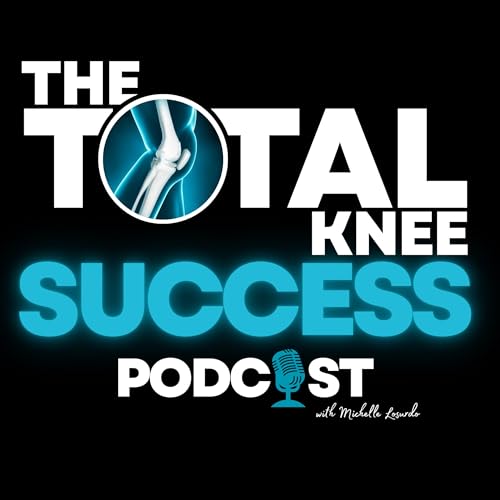
Episode 8: Pain Beyond the First Weeks: What’s normal, what’s not
カートのアイテムが多すぎます
カートに追加できませんでした。
ウィッシュリストに追加できませんでした。
ほしい物リストの削除に失敗しました。
ポッドキャストのフォローに失敗しました
ポッドキャストのフォロー解除に失敗しました
-
ナレーター:
-
著者:
このコンテンツについて
In Episode 8 of the Total Knee Success Podcast, we explore why pain may linger beyond the first few weeks after knee replacement. You’ll learn what’s normal, what’s not, and how to spot red flags that need medical attention. We’ll talk about common reasons for lingering pain, how to recognize patterns of progress, and strategies for easing discomfort - from pacing activity to calming the nervous system with simple breathing techniques. You’ll also hear how mindset and small daily choices can make a big difference in long-term outcomes.
Learn more and access additional resources at TotalKneeSuccess.com.
Medical Disclaimer The Total Knee Success Podcast is for educational purposes only. It is not a substitute for professional medical advice, diagnosis, or treatment. Always seek the advice of your surgeon, physical therapist, or other qualified health provider with any questions you may have regarding your specific condition or care. Never disregard professional advice or delay seeking it because of something you heard on this podcast. This podcast is not affiliated with Michelle's clinic or teaching roles.
Amazon Affiliate Disclaimer As an Amazon Associate, I earn from qualifying purchases. This means that if you click on a product link in my show notes or at TotalKneeSuccess.com and make a purchase, I may receive a small commission at no extra cost to you. These commissions help support the podcast and allow me to keep creating free, evidence-based content. I only share products that are commonly recommended for knee replacement recovery and that patients have found helpful.
References
- Jette DU, Hunter SJ, et al. Clinical practice guideline: Physical therapist management of total knee arthroplasty. Phys Ther. 2020;100(9):1603-1631. doi:10.1093/ptj/pzaa099
- Wylde V, et al. Persistent pain after joint replacement: prevalence, sensory qualities, and impact. Rheumatology. 2011;50(2):215–221.
- Beswick AD, et al. What proportion of patients report long-term pain after hip or knee replacement? BMJ Open. 2012;2:e000435.
- Baker PN, et al. Pain and function outcomes following primary TKA: registry data. J Bone Joint Surg Am. 2012;94(11):990–996.
- Lenguerrand E, et al. Risk factors for persistent pain after knee replacement: multicenter study. BMJ Open. 2016;6(12):e012166.
- Wylde V, Blom AW. The failure of survivorship. Bone Joint J. 2019;101-B(6):629–631.
- Skou ST, et al. Predictors of pain after total knee arthroplasty. Clin Orthop Relat Res. 2018;476(6):1131–1141.
- Lewis GN, Rice DA, McNair PJ, Kluger M. Predictors of persistent pain after TKA. Pain. 2015;156(10):1930–1940.
- Liu SS, et al. Predictors of prolonged pain after TKA. Anesth Analg. 2012;115(5):1066–1073.
- Zautra AJ, Fasman R, Davis MC, Craig AD. The effects of slow breathing on affective responses to pain stimuli: an experimental study. Pain. 2010;149(1):12–18.
- Busch V, Magerl W, Kern U, Haas J, Hajak G, Eichhammer P. The effect of deep and slow breathing on pain perception, autonomic activity, and mood processing—an experimental study. Pain Med. 2012;13(2):215–228.
- Lehrer P, Gevirtz R. Heart rate variability biofeedback: how and why does it work? Front Psychol. 2014;5:756.


